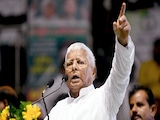- Earth and the Milky Way may be near the centre of a massive cosmic void
- The void is about a billion light-years wide and 20% less dense than average
- This void could explain the Hubble Tension in universe expansion measurements
In a discovery that could upend our understanding of the cosmos, scientists believe that Earth, along with the entire Milky Way, may be drifting near the centre of a massive cosmic void, an area unusually empty of galaxies and matter.
Presented at the Royal Astronomical Society's National Astronomy Meeting, new research led by Dr Indranil Banik from the University of Portsmouth proposes that this "void", also known as an underdensity, could help solve one of astrophysics' biggest puzzles: the Hubble Tension, a long-standing discrepancy in measurements of the universe's rate of expansion.
“We showed that a void model is about one hundred million times more likely than a void-free model,” Dr Banik said, explaining that their data was based on 20 years of measurements of baryon acoustic oscillations – faint, frozen ripples in matter left over from the Big Bang, often described as the "sound" of the early universe.
If true, this theory means we're sitting inside a cosmic bubble roughly a billion light-years wide and about 20% less dense than the average universe. This sparsity of matter could distort our view of how quickly galaxies are racing away, essentially tricking us into thinking the universe is expanding faster than it actually is.
The idea of a local void is not new; scientists have debated it for decades, but it has remained controversial because it challenges the principle that the universe should be evenly spread out at large scales. However, Dr Banik's model, which incorporates redshift measurements and the latest Planck satellite data, offers compelling evidence that could shift mainstream scientific opinion.
If confirmed, the implications are profound: not only would it reshape our understanding of cosmology, but it could also suggest that the "heat death" of the universe, when all energy is evenly spread and nothing happens anymore, might be much further in the future than previously believed.
The research team plans to compare their void model with other measurements to further test its validity.















